Leonardo and Borelli
by Chris Miller
Today, two hemispheres come together. The University of Houston presents this series about the machines that make our civilization run, and the people whose ingenuity created them.
Biomechanics is the study of the structure and motion of living things. The field developed mostly in the 20th century, but its roots trace back to two Renaissance Italians.
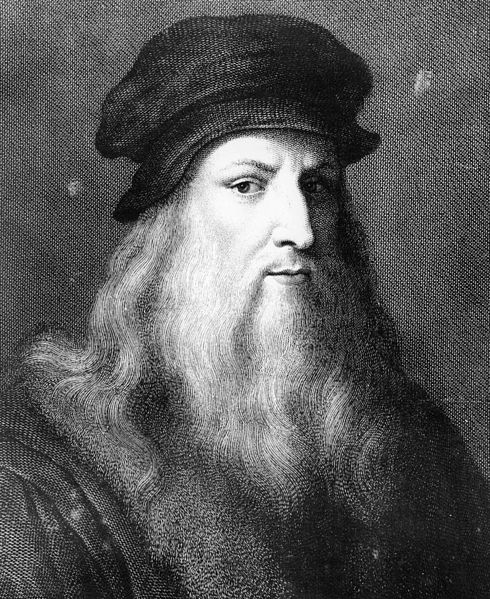
Leonardo Da Vinci. Photo Credit: Wikimedia Commons
Leonardo da Vinci was born in 1452 in Tuscany. He apprenticed as an artist at age 15, which led to his keen interest in living things and their structure. He lived in a time where scholars understood the world through informal observation and illustration. And Leonardo's innate skill for observing nature to a greater degree than others suited him well.
Giovanni Borelli was born in Naples in 1608, about 150 years after Leonardo. Borelli began studying mathematics at age 16, then later, expanded his work into astronomy and physiology. Borelli eventually became the chair of mathematics at the University of Pisa.
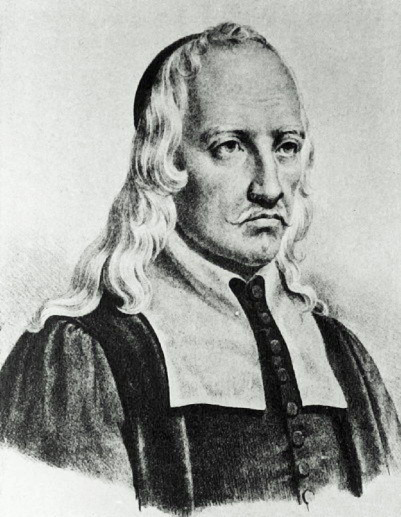
Alfonso Borelli. Photo Credit: Wikimedia Commons
Both studied anatomy by dissection. Leonardo investigated human anatomy in the context of mechanics: studying muscle action and joint function, and mapping the skeletal system. He understood things by describing or depicting them in great detail, not by carrying out formal experiments. Scientists of his time, however, ignored his work, since he lacked formal education in Latin and mathematics.
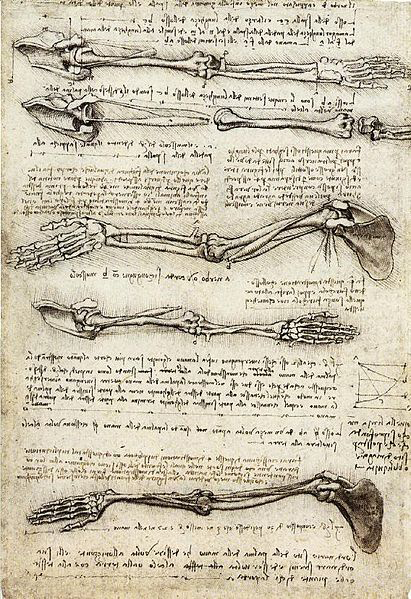
"Studies of the Arm showing the Movements made by the Biceps". Photo Credit:Wikimedia Commons
Borelli set up an anatomy lab in his own house in Pisa. There he hosted lectures and discussions with faculty and students. One colleague encouraged him to apply his skills in mathematics to anatomy. Borelli took on the challenge. He computed muscle forces, determined the body's center of mass, measured the volumes of inhaled and exhaled air, and described blood flow. Borelli ran formal experiments in his studies, which reflected the 17th century movement towards empiricism. His equations and diagrams worked in concert to describe body mechanics more fully.
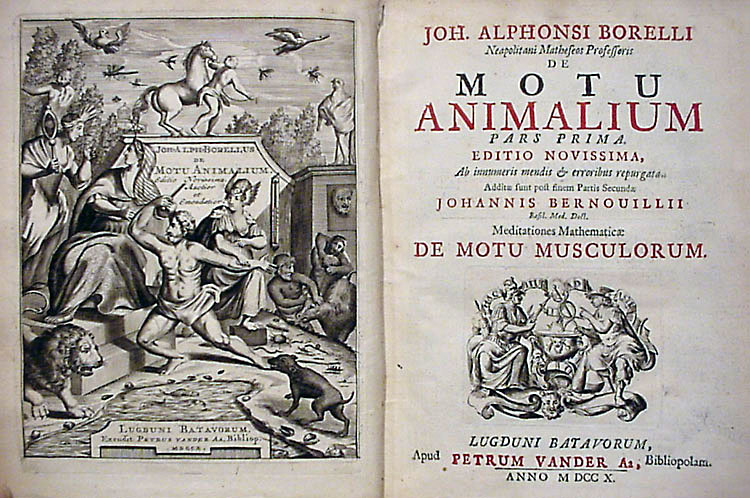
"Borelli - Motu Animalium" by Giovanni Alfonso Borelli - Motu Animalium book cover. Photo Credit: Wikimedia Commons
Leonardo never published his notes. Instead he sent them in small batches to friends and pupils until he died in 1519. Many years later, one of his pupils collected these notes not into a medical text, but into a book on painting. Leonardo's complete notes were rediscovered in the 19th century, and his genius was finally appreciated and celebrated.
Borelli likewise did not collect his studies on biomechanics until late in his life. He completed his treatise entitled, On the Movement of Animals, but he didn't get it in print before he died in 1679. Friends published the work for him posthumously.
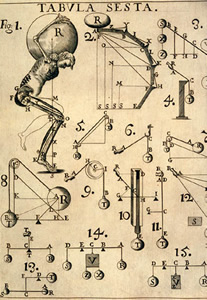
Borelli's work. Photo Credit: Wikimedia Commons
Colleagues rejected Borelli's findings as well, because they couldn't accept the marriage of mathematics and biology. The results of his work appear in many areas of medicine, yet he never received Leonardo's fame.
These two pioneers approached biomechanics from different perspectives. Like the metaphorical two hemispheres of our brain -- the logical left and the artistic right -- their studies complement each other to provide a richer, more complete view of human motion. And we get to choose whether to appreciate it in the equations of Borelli, or the artistry of Leonardo.
I'm Chris Miller at the University of Houston, where we're interested in the way inventive minds work.
(Theme music)
Supplementary material:
The American Society of Biomechanics pays tribute to Borelli by naming its highest honor after him. The Borelli Award annually recognizes outstanding career achievement by an individual in biomechanics research.
Both were inventors. Leonardo’s inventions (or drawings of inventions) are well-known: an ornithopter, the concept for a helicopter, single span bridges and a giant crossbow. Borelli sketched early designs for a self-contained underwater breathing apparatus and a submarine .
An overview of other early biomechanists can be found at the American Society of Biomechanics website.
Three chapters of “On the Movement of Animals” describe the heart and circulation, specifically the muscular action of the heart.
Dr. Francis Duck (University of Bath) quoted the following in his lecture about Borelli at the 12th International Tissue Elasticity Conference (2013):
[Borelli was] One of the great pioneers of physiological anatomy; his imprint is everywhere; his office has been so universal that his name is never mentioned in the texts upon which our medical education is founded!
William Wightman. The Growth of Scientific Ideas. 1953.
A general biography of Borelli can be found here.
This episode was first aired on January 19, 2016